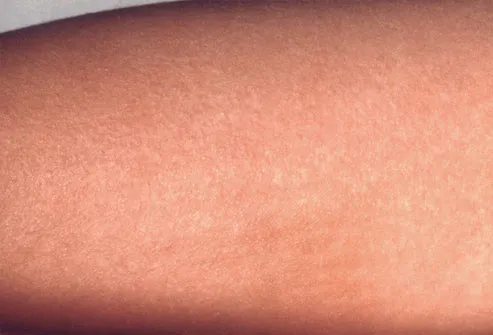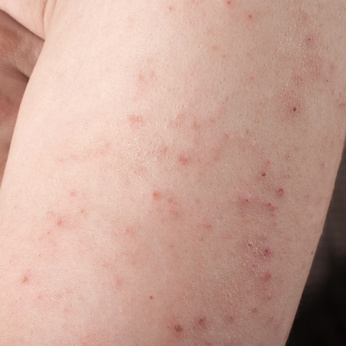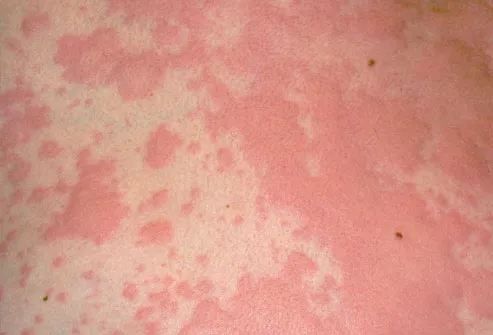Skin Rash Identification Biography
Source(google.com.pk)
You've been working in the yard, ripping out all those unwanted weeds. Sure, grass may make you a little itchy, but now you're scratching a small red patch and wondering where it came from. You've been working in the yard, ripping out all those unwanted weeds. Sure, grass may make you a little itchy, but now you're scratching a small red patch and wondering where it came from. Let's look at some tips for identifying different kind of rashes, as well as some ways to clear them up.
Allergic contact dermatitis is a rash that forms from an allergic reaction to some chemical compound that touched your skin.Think about any new product you're using that contains a fragrance, for instance. Or it could be a new cosmetic you're trying out.Some people are allergic to rubber ingredients, which can cause an immediate itching or swelling.There's also irritant contact dermatitis, less severe than the allergic kind. People can develop rashes from prolonged exposure to mild detergents or solvents.Unfortunately, many rashes that fall under the category of allergic or irritant contact dermatitis can look like any other more serious rash, making it difficult to diagnose.You have to take a moment to consider any new chemical product you've tried, if you're allergic to some type of metal you're wearing or a rubber product you've come into contact with.If you've been outdoors, consider you may have come into contact with poison oak or poison ivy. If so, oatmeal baths, cold compresses or over-the-counter medicines can help reduce the itching and inflammation while you wait for the rash to pass.
Certain people can have negative reactions when starting a new medication. You can develop what's called a drug rash, either as a side effect or as an allergic reaction to the medicine.It could happen with any medication, but common types are antibiotics, diuretics or anti-seizure prescriptions. And in some cases, sunlight can intensify the effect.Drug rashes often start out as small red dots, spreading to larger areas.f indeed you have developed a rash due to medications, contact your doctor, who may tell you to stop taking the prescription.You may not notice a drug rash right away; it could take a few days to develop, but usually occurs in the first week or so. After you stop taking the medicine, the rash will gradually disappear.In rare cases, an allergic reaction to medication can be life threatening, affecting the respiratory and other systems.This is why it's important to discuss all the details with your health care provider.
If you've ever noticed stinging, red dots when taking off clothing after being in the heat, you could be looking at a heat rash.Mostly harmless, heat rashes occur when the natural process of sweating is blocked, often by wearing tight-fitting clothes.While some heat rash looks like little red bumps, other cases could be small bumps filled with clear fluid. Again, not to worry, heat rash is not dangerous.If you develop a heat rash, the first thing to do is cool down and put on loose-fitting clothing, which will help prevent the rash from becoming worse. Don't wear anything that prevents your body from sweating.With intertrigo, a heat-related rash caused by skin friction, keep the area clean and dry. This will prevent a bacterial or fungal invader from infecting the already cracked or damaged skin, which can make a painful condition much worse.
Most common rashes can develop regardless of age. But one in particular is problematic for the senior population.
Shingles is a serious condition that can develop in older people who have the herpes zoster virus, aka chicken pox.
Of course, chicken pox mostly occurs in children. But once a person has had chicken pox, the virus remains dormant in his or her body forever With shingles, a red rash develops on the face or body, eventually becoming blisters. Unfortunately, that's not the worst part: Shingles can be extremely painful because it affects the nervous system, where the herpes zoster virus lies dormant.For people with a shingles outbreak, how long they will have the rash can be a challenge. Though it depends on the person, shingles can stick around for three to five weeks, often going away on its own.here is no cure for shingles, considering it's a virus, but a vaccine has been developed that could prevent an outbreak. The vaccine is for those ages 60 and older and must be administered by your doctor.
Eczema includes a broad number of itchy, red rashes, the cause of which is unknown. The most severe of these is atopic dermatitis, a rash that often appears on the inside of the elbows, back of the knees or face. Atopic dermatitis is not contagious. Researchers believe the condition is genetic, passed down from one or both parents.
In conditions like eczema or psoriasis, there is no cure. These rashes are thought to be genetic, and dealing with the symptoms is the only treatment available.In most cases of atopic dermatitis, the most serious form of eczema, it begins in childhood. The condition fades in many patients, though it can come back or cause other symptoms like easily irritated skin or skin infections.Though there's not a cure, topical creams containing cortisone are effective are reducing the length of a flare-up in both eczema and psoriasis.










No comments:
Post a Comment